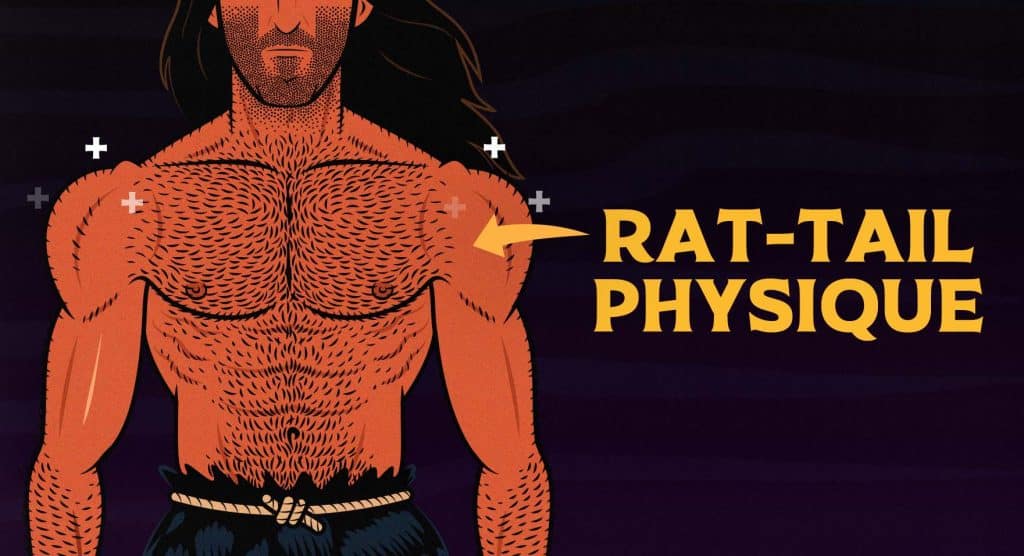
Do Women Prefer V-Taper Physiques with Bigger Side Delts?
When most guys think of the most attractive male physique, they think of a V-taper body shape with broad shoulders and a narrow waist. That isn’t wrong. There’s quite a bit of research showing that men with broader shoulders and narrower waists are more attractive.
The V-taper physique isn’t a myth. Rather, there are myths surrounding the V-taper physique. Those misunderstandings ruin what it symbolizes, destroying its aesthetic appeal.
The mistake is assuming you can improve your physique by emphasizing certain muscles, such as your side delts. This is the opinion held by quite a few experts and influencers, including Dr. Mike Israetel, Dr. Macken Murphy, TylerPath, WanHee, and many other influencers with many millions of followers (as shown in this video).
It’s true that building bigger side delts would give you broader shoulders, giving you a greater shoulder-to-waist ratio, and thus technically giving you a more pronounced V-taper, but I’m not sure that’s the best way to improve your appearance.
Let me go through the research, show you some interesting results from a survey I conducted, and explain the logic.
If you read the article and disagree with me, post a comment. I’ll answer it. I want to get this right.
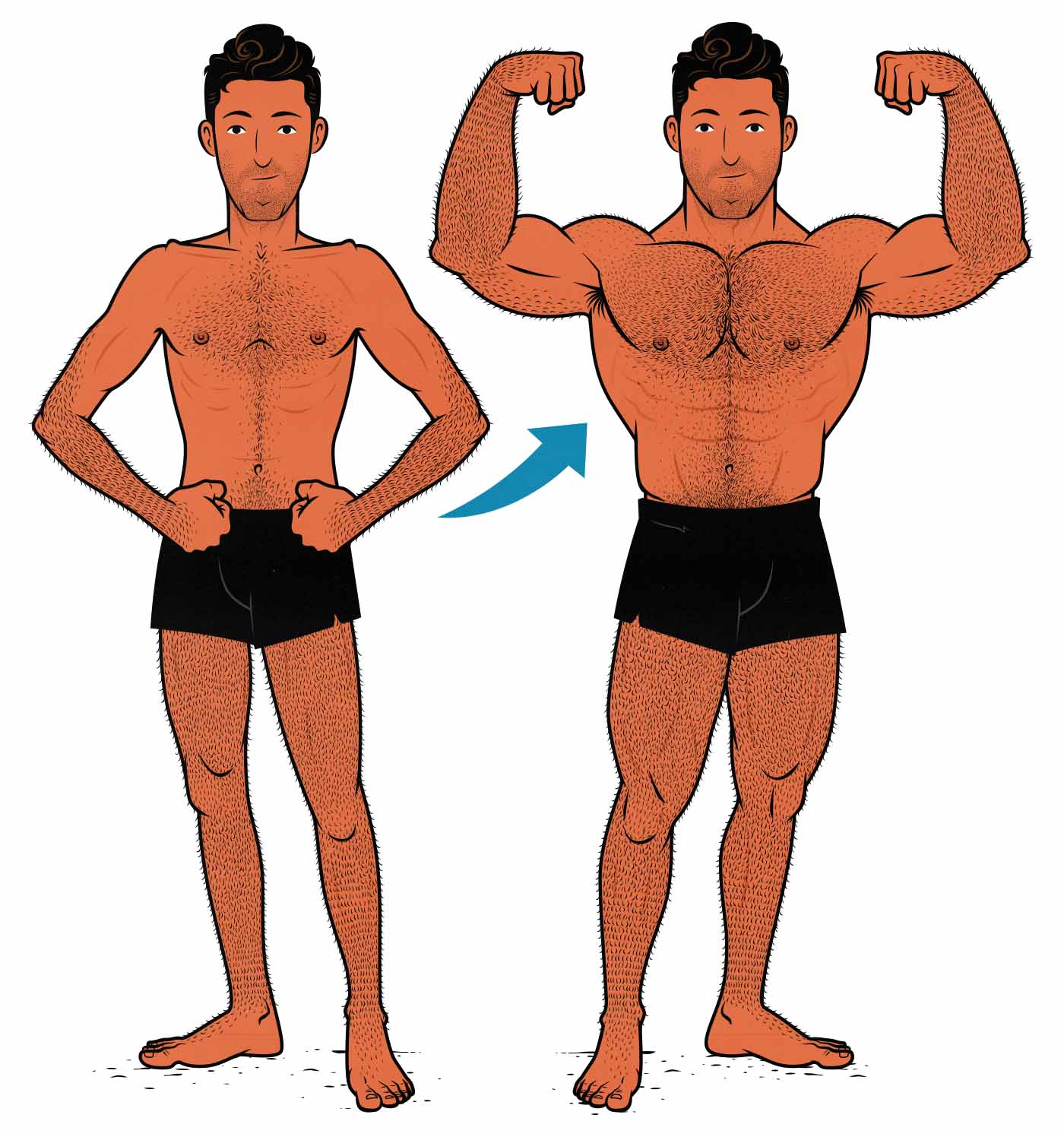
Goodhart’s Law & The Great Rat Massacre
Before we delve into the V-taper research, it’s important to understand how Goodhart’s Law can mess with that research.
Goodhart’s Law is the idea that “when a measure becomes a target, it ceases to be a good measure.”
My favourite example is the Great Hanoi Rat Massacre of 1902. The city of Hanoi (the capital of Vietnam) was infested with rats, so the government announced they would pay a bounty for every rat tail people turned in. They expected people to kill the rats, then cut off their tails, and then bring in those tails for a reward.
But that’s not what happened. Instead, people would catch the rats without killing them, cut off their tails, and then release them back into the wild, so that the rats could breed, and thus produce more rat tails, allowing the rat catchers to earn more money. And so, as you can imagine, the rat infestation got worse.
Now let’s consider the V-taper physique. There’s quite a bit of research showing that men with broader shoulders and narrower waists look better. And that’s true, but it can be misleading.
As you gain more muscle, your shoulders will grow broader, and so will all of their other muscles. As you get leaner, your waist will get smaller. This will give you more of a V-taper physique, whether or not you emphasize your side delts.
Now let’s imagine you do it the other way around. Instead of getting stronger and letting your v-taper emerge naturally, let’s say you take the rat-tail approach, prioritizing your side delts, building them proportionally bigger than your other muscles.
Emphasizing your side delts will give you more of a V-taper, yes, but will it look better than someone with a more balanced physique? Will it look better than if you had emphasized your arms, chest, or back? Let’s go deeper.
The V-Taper Research
Next, we can look at the V-taper research. You might think that all the research looks at the shoulder-to-waist ratio, but that isn’t true. Many of these studies look at the chest-to-waist ratio (Coy, Tovée, Swami, Swami, Wardle).
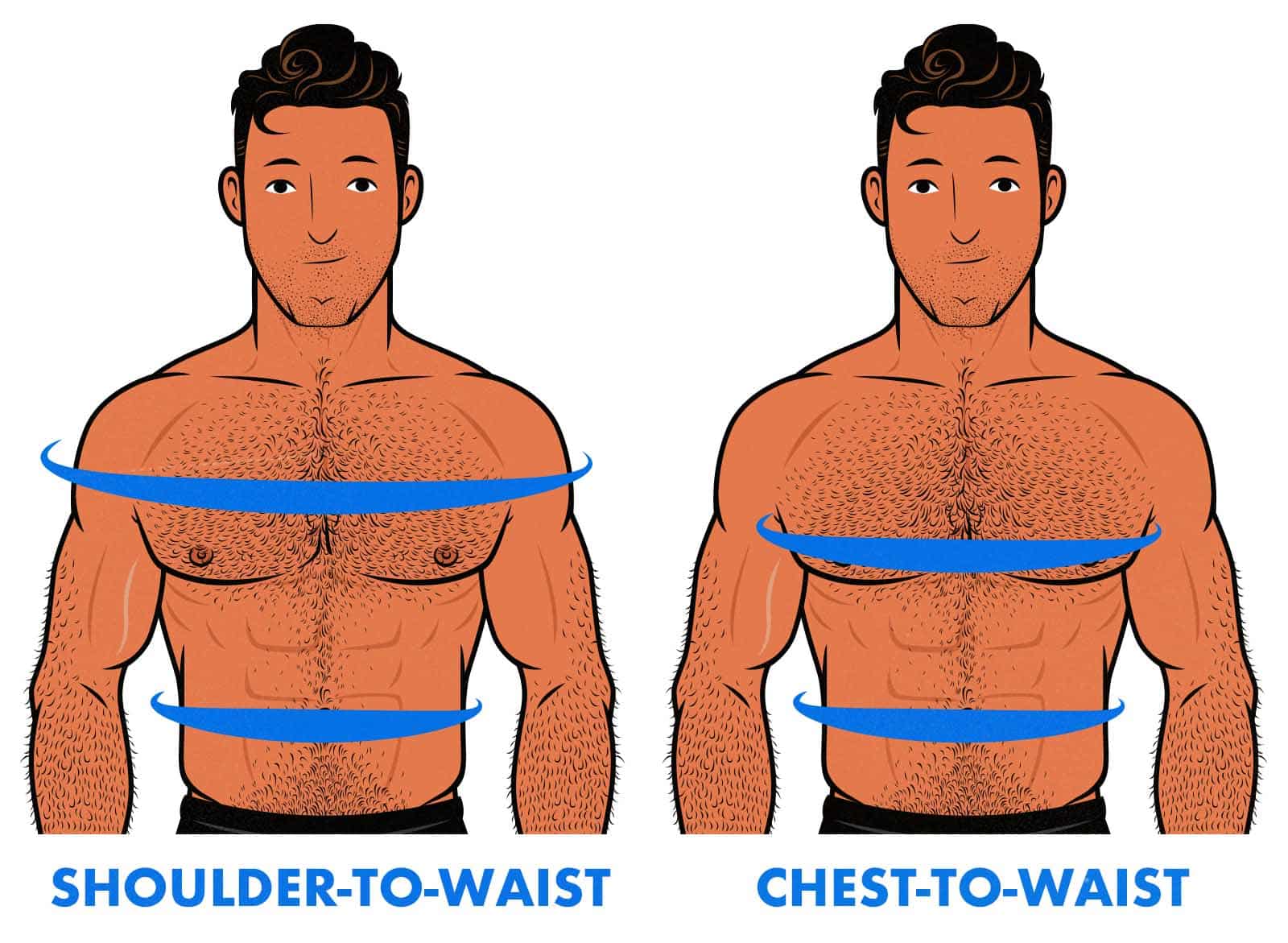
Your chest-to-waist ratio doesn’t factor in your shoulders at all. Instead, it measures how big your chest, serratus, and back muscles are, and then compares them against the leanness of your waist.
Interestingly, whether you measure around the shoulders or the chest doesn’t seem to matter. These studies all find the same thing: the V-taper is more attractive.
So on the one hand, building a V-taper physique will indeed improve your appearance. But on the other hand, building bigger shoulders clearly isn’t what defines your V-taper. Your upper back, lats, chest, and serratus anterior appear to have just as much impact.
And if all of those muscles seem to be similarly attractive as your shoulders, then perhaps your biceps, triceps, neck muscles, abs, and obliques are just as important. Perhaps what actually matters is looking strong and athletic.
The Results of My V-Taper Survey
I drew two different illustrations. One was of a guy with bigger shoulders, and the other was of a guy with a bigger chest. I asked 423 women which one they preferred (survey results). Most women preferred the guy with the bigger chest.
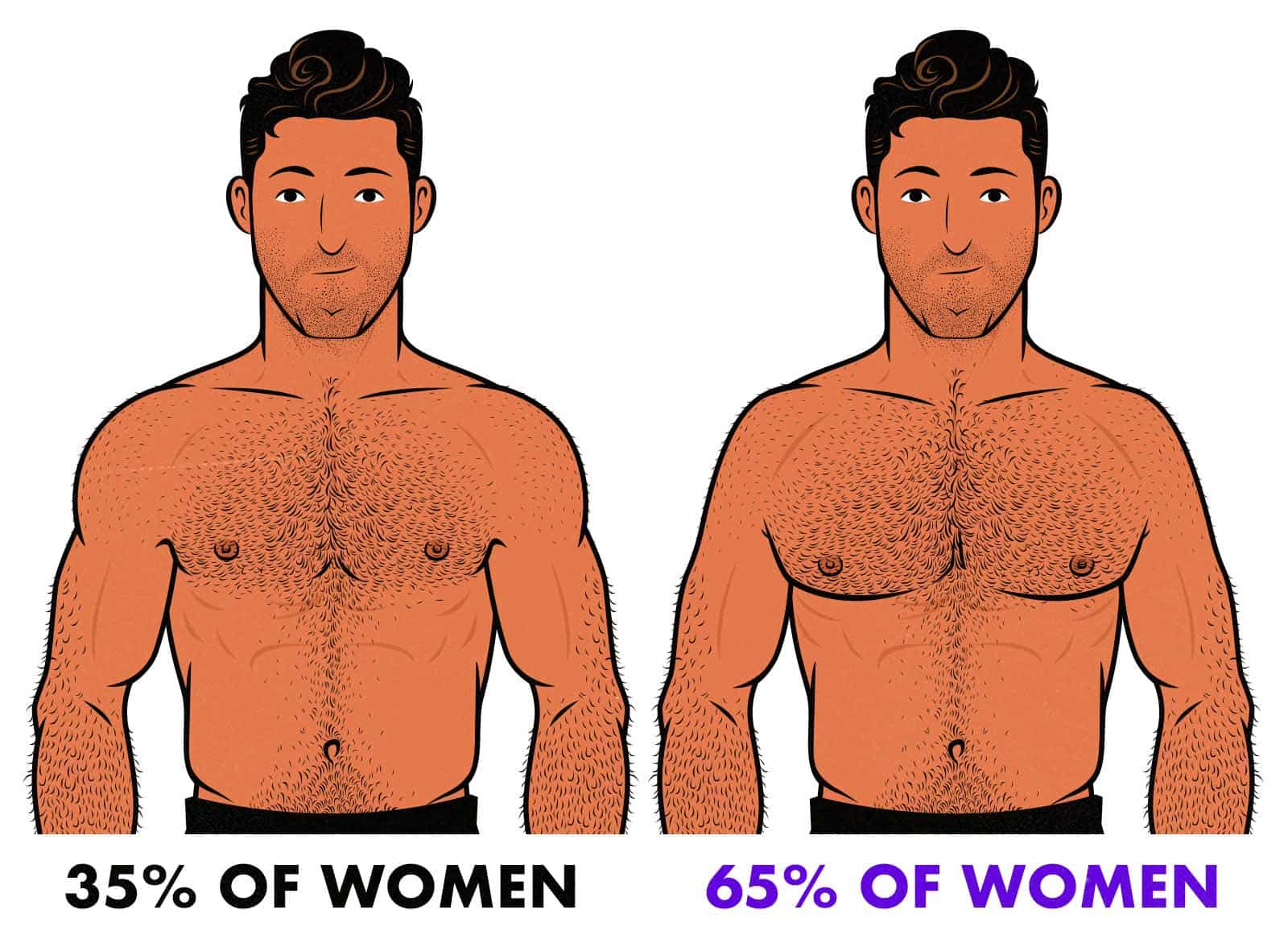
I realize aesthetics isn’t just about what women think. So I also surveyed 750 men, and they had an even stronger preference for the physique with the bigger lower chest and the smaller shoulders.
80% of men chose the bigger chest.
Men choosing the physique with the bigger chest mirrors their real gym behaviour. Most men put more emphasis on the bench press than any other exercise.
This might make it seem like I’m arguing that the chest is more attractive or that the bench press is more important. I’m not. All I’m saying is that the more I probe this idea of the side delts being the most important part of the V-taper, the more holes I find. And there’s another hole.
The Strength Study
There’s some other research that’s even more interesting. In this study, Dr Aaron Sell had men do four different upper-body exercises to see how strong they were. Then he took photos of those men with their shirts off, and cropped off their heads, like this:
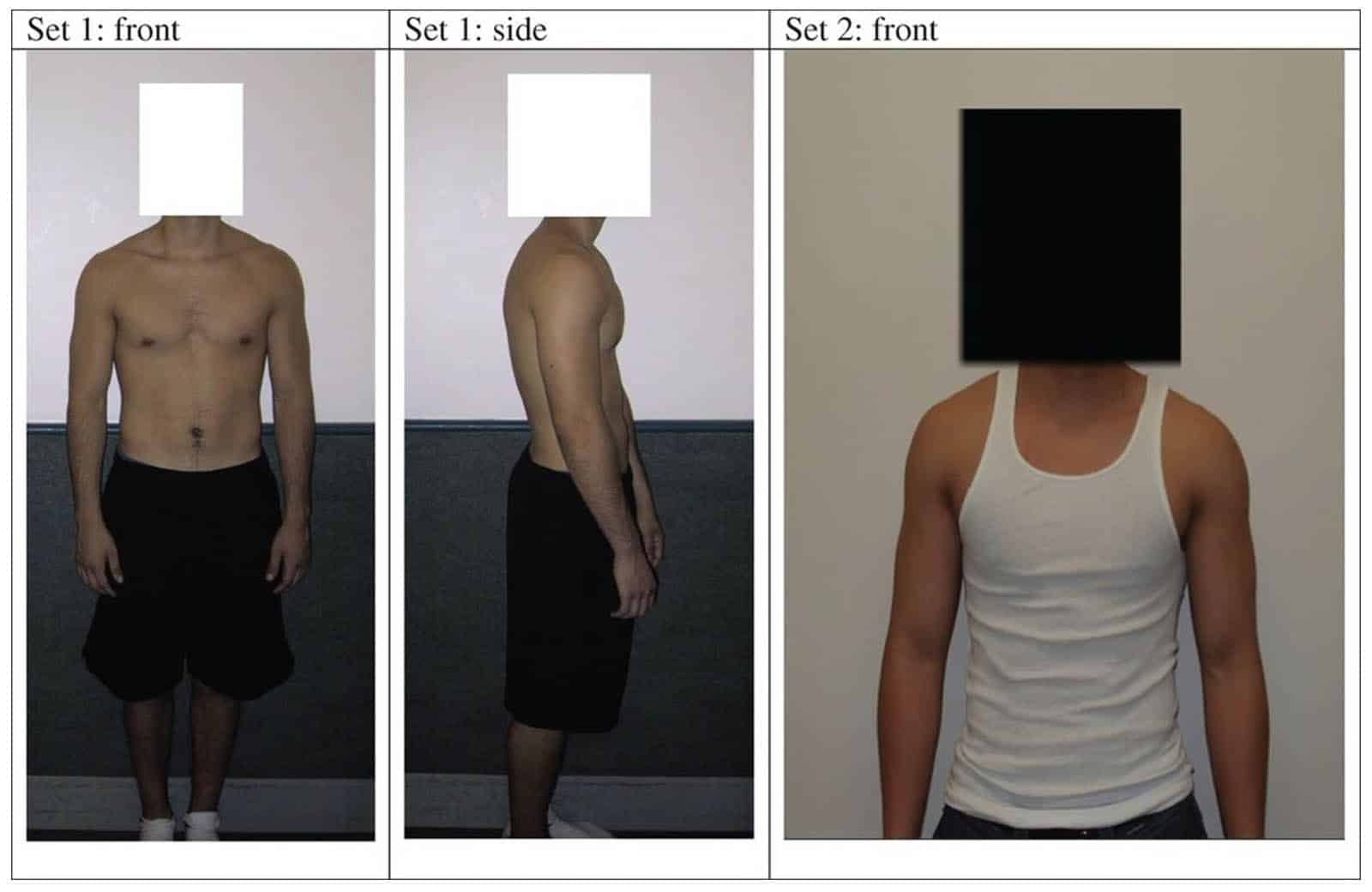
The researchers then asked women to rate how attractive the men were. The women didn’t know how much the men could lift, but it was obvious from the size of their muscles, and the vast majority of women preferred the bodies of the stronger men. They also preferred the men who were leaner.
The guys in the study weren’t being tested like powerlifters. The researchers didn’t test their 1-rep max on the squat, bench press, and deadlift. Instead, they tested how much the guys could biceps curl, crunch, chest press, and row. And the guys who were strongest at these somewhat random exercises were rated as most attractive.
That doesn’t mean those exercises are special. They aren’t. And neither are the powerlifting exercises. What’s happening is that when you measure random feats of strength, you do a good job of measuring overall strength, whereas if you let people know what you’ll be testing ahead of time, they can train specifically for the test, getting stronger in a much narrower sense.
If you focus on just narrow slivers of strength, you’re over-optimizing. You’re focusing on the rat’s tail. The squat, bench press, and deadlift are good exercises to get stronger at, but they aren’t necessarily any more important than biceps curls, overhead presses, pull-ups, push-ups, and rows.
When the researchers selected less common exercises, they did a good job of capturing overall strength, and they found that women preferred the physiques of guys who were stronger overall.
Caveats
So far, I’ve argued that prioritizing the side delts isn’t the one true path to building a better V-taper. But that doesn’t mean you should neglect your side delts.
Your side delts aren’t trained very well by the big compound exercises, so it does help to include some overhead pressing and lateral raises in your workout program. That’s part of how you build a balanced physique that’s strong overall. But the same is true for your biceps, triceps, neck muscles, and all the other muscles that aren’t trained very well by compound exercises.
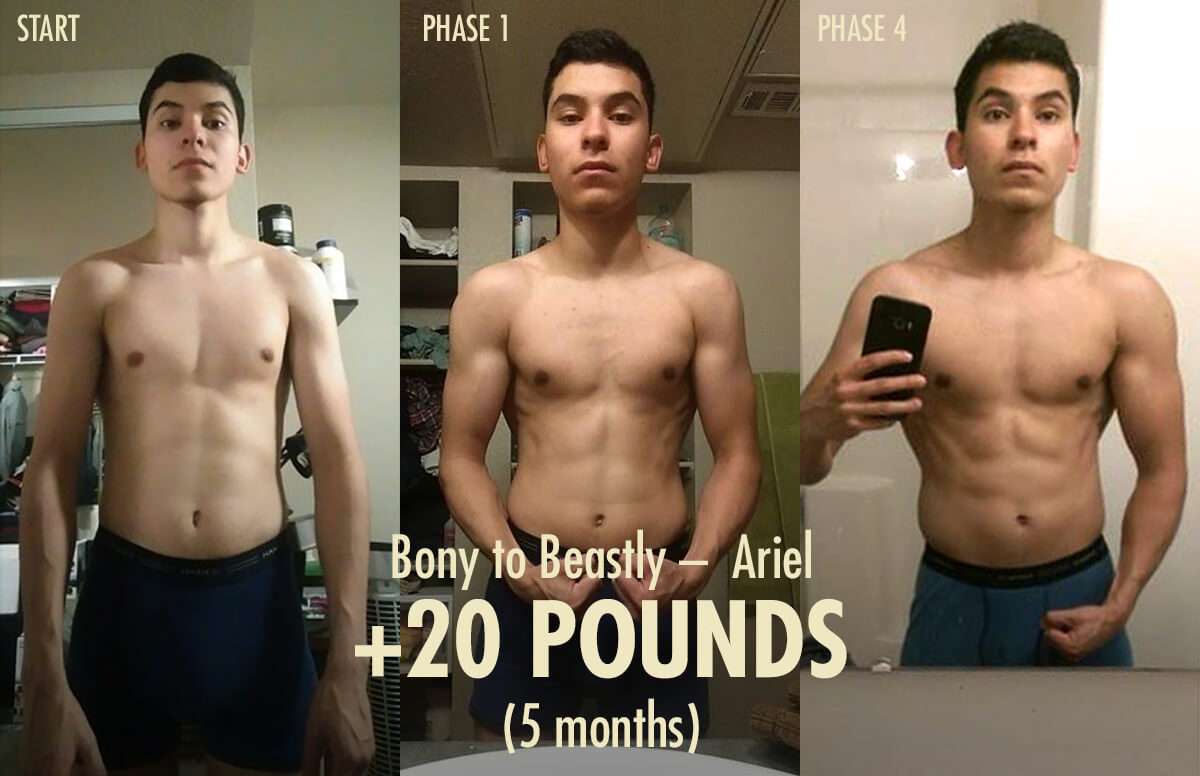
I’m arguing that you should give enough attention to everything. You should get strong enough overall. I suspect that most of the muscles in your upper body contribute somewhat equally to how good you look. Almost all of them will give you more of a V-taper, too.
Bigger Obliques, Bigger Waist
The next thing to consider is the size of your waist. There’s a popular idea in the fitness industry that you should avoid training your obliques to keep your waist narrow. I think that’s misguided.
Narrow waists are attractive because they represent leanness, not weakness. I think if we want to embody what the V-taper symbolizes, then we ought to build a waist that’s lean but also strong. That means bulking up your abs, obliques, and spinal erectors, all of which will add inches to your waist. I suspect you’ll like how it looks.
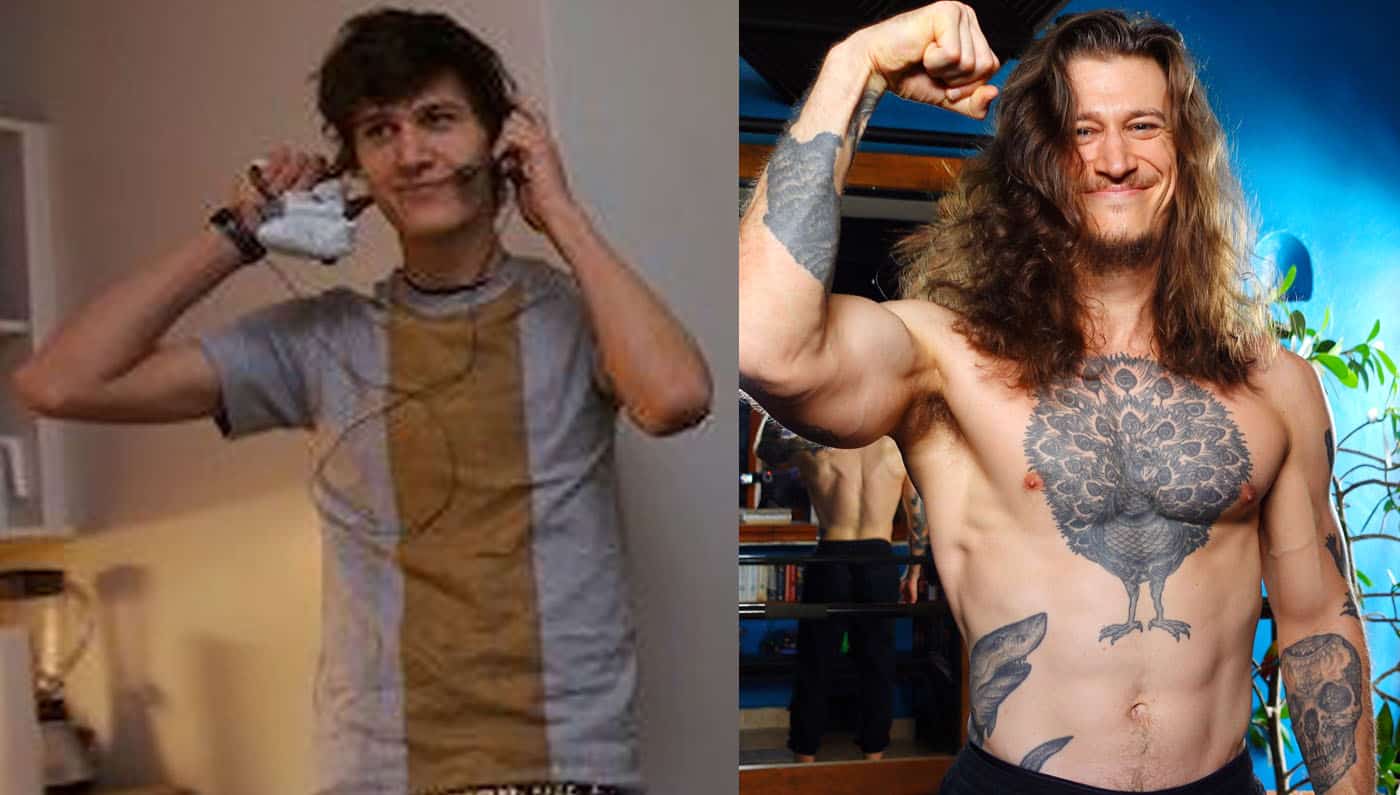
In my case, I started off at a skinny 130 pounds, with 39-inch shoulders and a 27-inch waist. Now, after gaining 70 pounds, I have 52-inch shoulders and a 32-inch waist. That’s +5 inches around my waist and +13 inches around my shoulders, giving me a greater V-taper overall. More about my bulking transformation here.
Here’s another example from a member who did our Bony to Beastly Program. He was bulking aggressively, trying to gain muscle as quickly as possible, whether or not it came along with some fat gain:
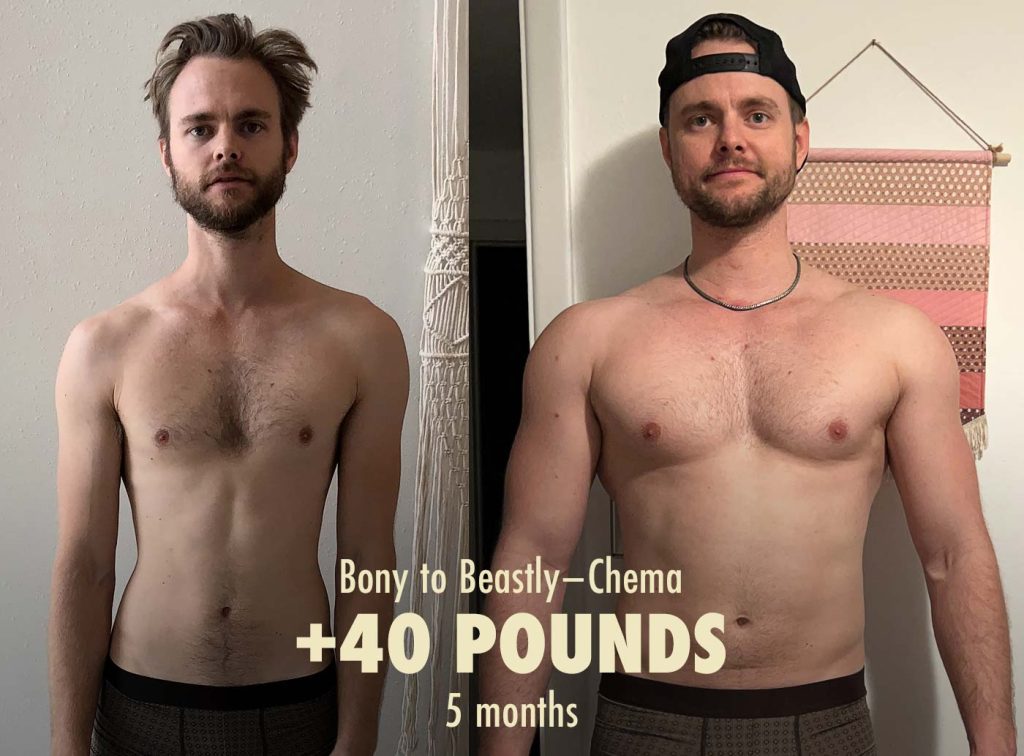
Notice how in the Before photo, his core muscles weren’t very well developed, and he had more of an hourglass shape. In the After photo, he’s gained some fat, but he’s also done a great job of bulking up his abs and obliques, developing more of a V-taper body shape.
So, in some cases, building bigger core muscles will give you a bigger waist but also more of a V-taper body shape. There’s far more muscle mass around your shoulder girdle than your waist. Your chest, back, and shoulders will grow far bigger than your core muscles.
But that isn’t even really my point. Even if you happen to have narrow shoulders and a blocky waist, you can still build the physique that the V-taper symbolizes—you can still become strong and lean.
The Unbalanced Physique
There’s this idea that building a balanced physique is best. That’s a perfectly fine place to start. I think it does help to build a balanced base of muscle and strength. And there’s nothing wrong with continuing down that path, especially if you don’t have a clear vision. But it’s also perfectly fine to build an unbalanced physique.
Most athletes are imbalanced on purpose. They aren’t trying to bulk up all their muscles equally. They aren’t trying to get strong overall. Instead, they’re trying to get better at their sports. And if you ask a woman who has the best body, she’ll probably point to someone with an imbalanced athlete’s physique:

Building bigger legs makes it harder for calisthenic athletes to do planches, front levers, or one-arm pull-ups. Same with gymnasts, climbers, fighters, and swimmers. No surprise, then, that most of them have proportionally smaller legs.
And that’s okay. As long as you’re reasonably strong overall, it’s totally fine to emphasize your favourite muscle groups, whether that means emphasizing your side delts or something entirely different, like your biceps or neck.
How to Build a True V-Taper Physique
If you came into this article wanting to bulk up your side delts, that’s completely fine. You can leave with that same goal. You might like this article about how to build bigger side delts. But you’re also free to choose a different muscle to emphasize. If that emphasis is built on a foundation of strength, I suspect it will look great.
If you want our help building a stronger, more aesthetic, and healthier physique, we have a few programs you might like:
- The Bony to Beastly Program is our flagship muscle-building program. It’s perfect for beginners and early intermediates. We’ll walk you through the process of gaining your first 20–30 pounds of muscle, showing you how to build muscle, bulk up, burn fat, and lift with great technique. There’s an emphasis on your upper body, but you’ll get stronger overall, including building a stronger posture.
- The Outlift Program is our intermediate hypertrophy program. We’ll show you how to get bigger by getting stronger. We’ll show you how to push harder and train more efficiently. The focus is on the Big Five compound exercises: the squat, bench, deadlift, chin-up, and overhead press.
- The Legends Program is our health and aesthetics program. We’ll show you how to build an aesthetic, strong, and healthy physique. There’s a fairly heavy bias towards bulking up the upper body while gaining strength and endurance in the lower body.
Alright, that’s it for now. If you agree or disagree, I’d love to hear your thoughts. I read and respond to all comments.
Shane Duquette is the founder of Outlift, Bony to Beastly, and Bony to Bombshell, each with millions of readers. He's a Certified Conditioning Coach (CCC), has gained 70 pounds, and has over a decade of experience helping more than 15,000 people build muscle. He also has a degree in fine arts, but those are inversely correlated with muscle growth.
